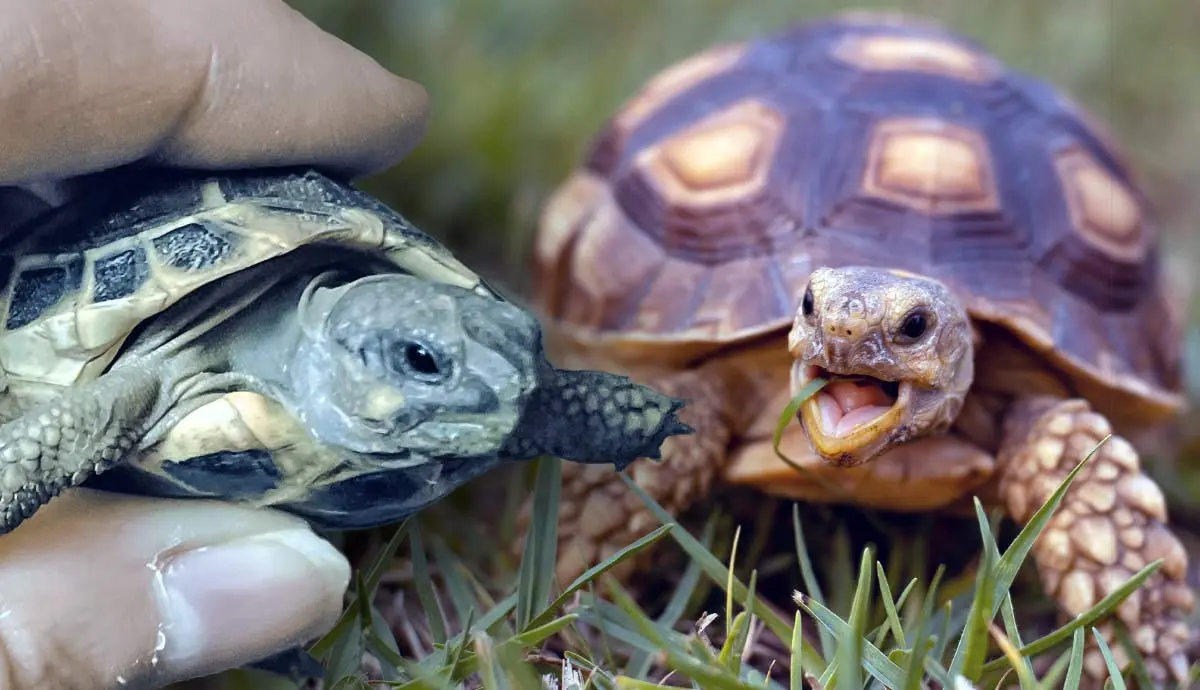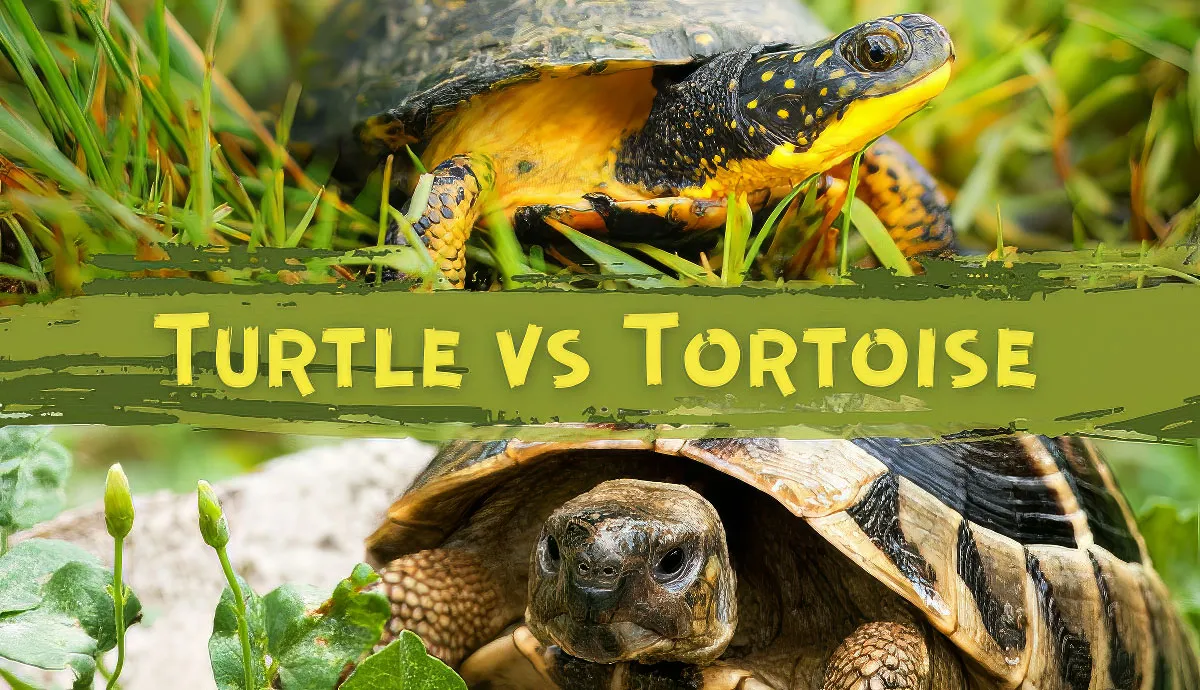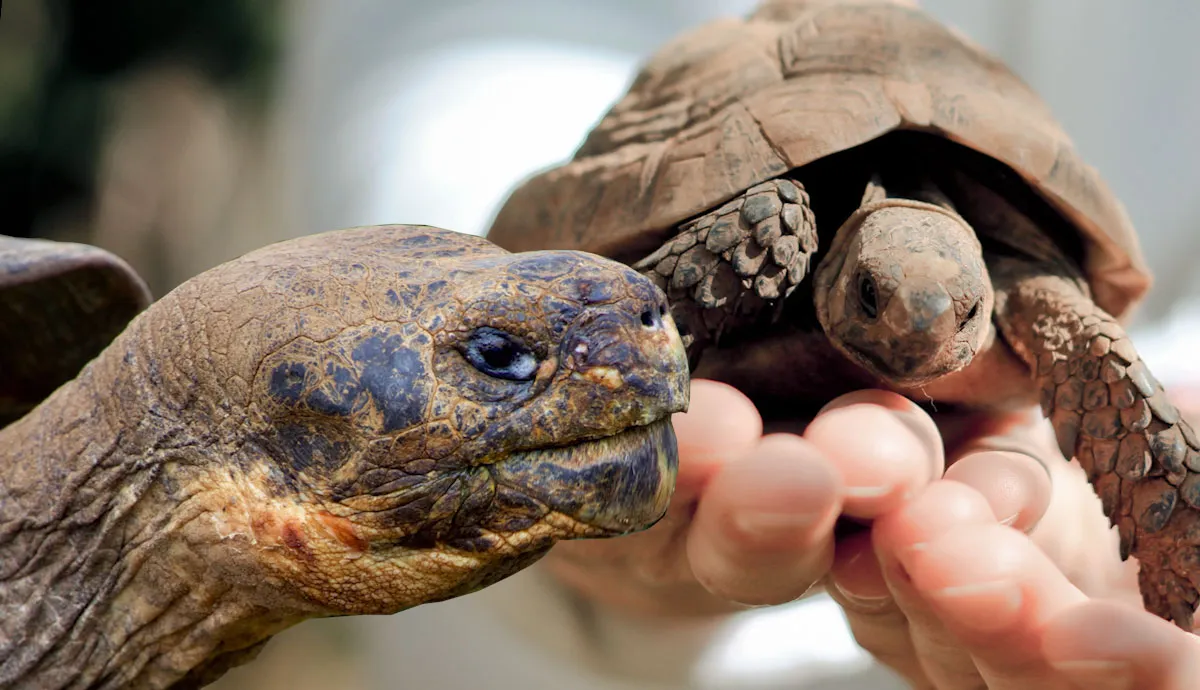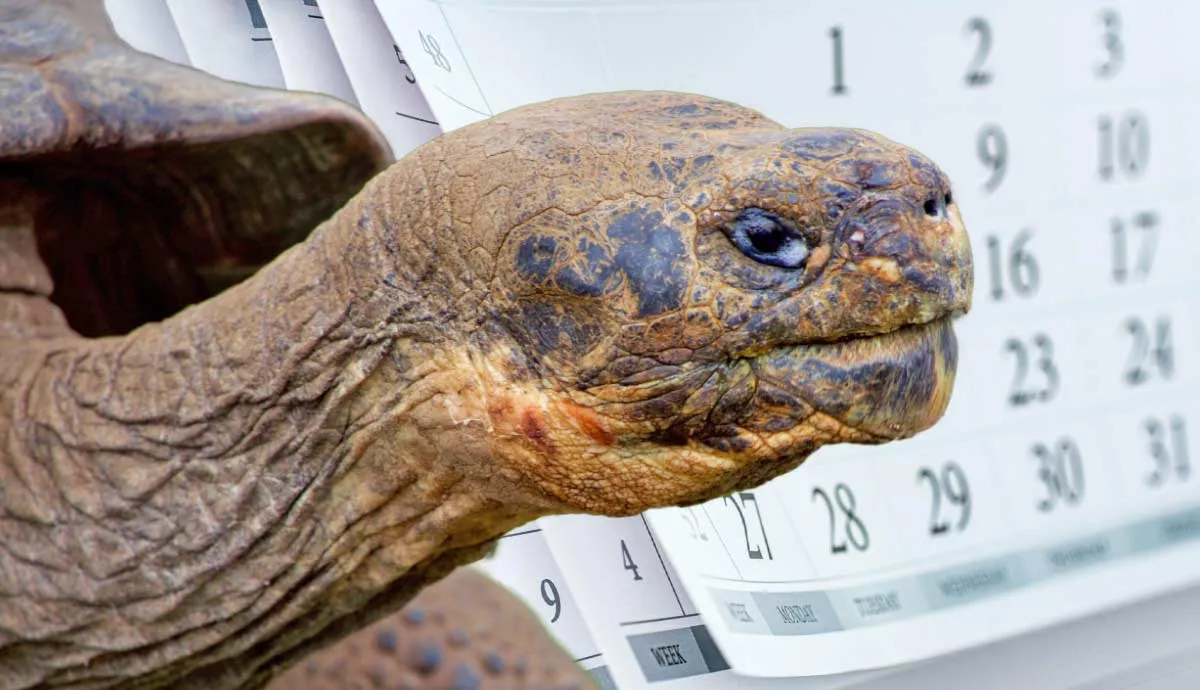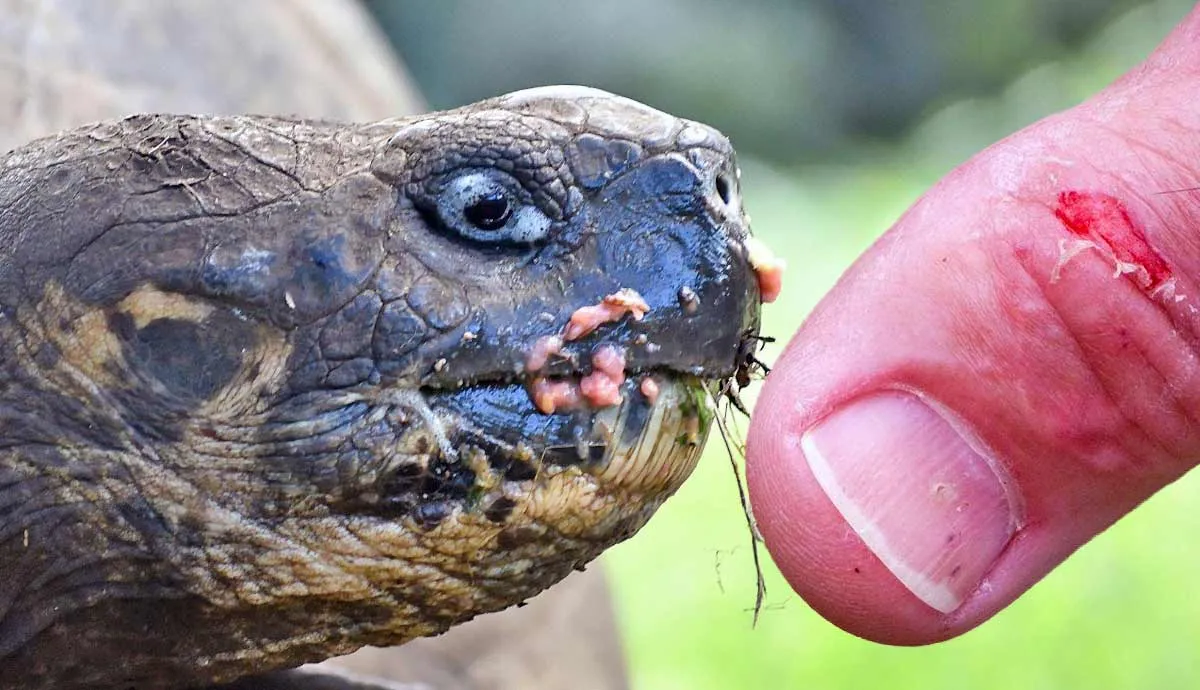When I was considering taking on baby tortoises as pets, one of the things I researched was how big they grow. Hatchlings are tiny and cute, but they don't stay that way - and large tortoises take up lots of space. This is why many people prefer small tortoises as pets. Not only are they super cute, but they’re also more practical. To discover the ones with the tiniest shells, take a look at my list of the top 5 smallest tortoise species.
Egyptian Tortoise (Kleinmanns)

Scientific Name: Testudo Kleinmanni
Size: up to 5 inches
Weight: up to 2 lb
Average Lifespan: 70 - 100 years
Habitat: Desert, semi-desert
Diet: Herbivore
The Egyptian tortoise is one of the smallest and cutest tortoise species but is unfortunately critically endangered. These little guys are native to Southern Mediterranean areas, including Egypt, Libya, and Israel, but now they only occupy a small part of Libya. The Egyptian tortoise has a slow reproduction rate, and the Libyan government doesn't recognize them as a protected species. This means that they have been gathered from the wild to the point of near extinction.
You can distinguish an Egyptian tortoise by its high dome and distinctive gray, ivory, gold, and brown colors, which camouflage them in the desert. Their unique markings and small stature also help them regulate their body heat and prevent dehydration in the searing desert heat.
These little creatures are super cute with a friendly, mild temperament and are generally not aggressive towards other species. Egyptians don’t hibernate and need consistently high temperatures, and because of their complex care needs, I don't recommend them for beginners.
Greek (Spur Thighed) Tortoise
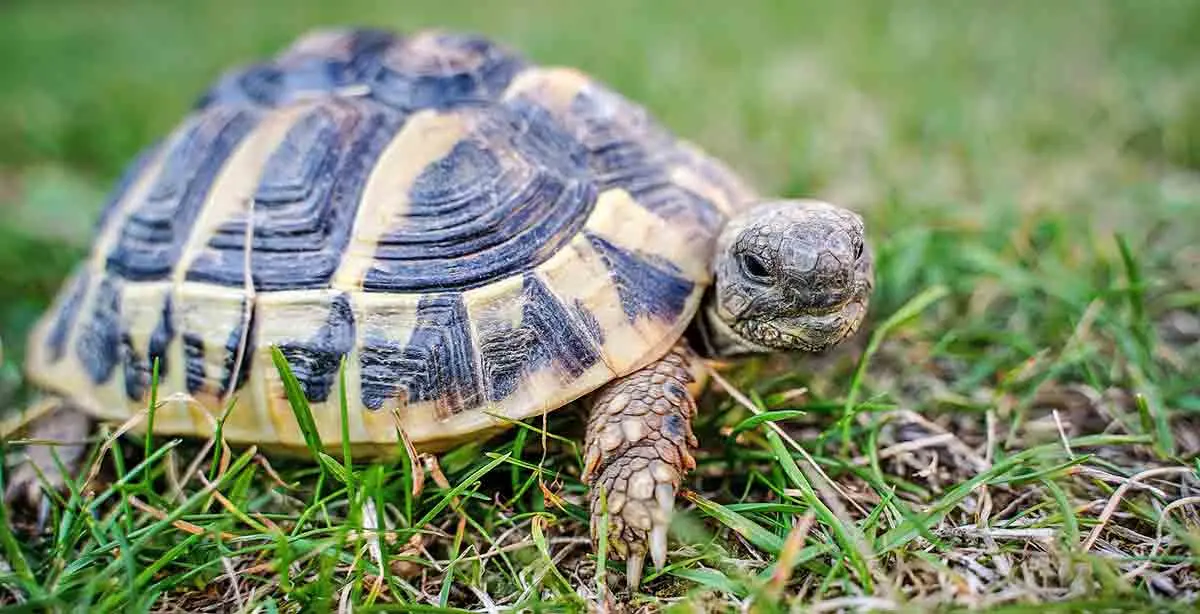
Scientific Name: Testudo Graeca
Size: up to 7 inches
Weight: up to 6lb
Average Lifespan: 100+ years
Habitat: Grassland, forest, savannah
Diet: Herbivore
Next on our list of the smallest tortoise species is the Greek. It’s one of 5 subspecies of Mediterranean tortoise, along with the Egyptian, Russian, Hermanns, and Marginated. All of them, except the Marginated, are part of the Testudo family and share similar characteristics, including their tiny size. Greek tortoises are native to Europe, Africa, and Asia and are common in many areas, including Southern Spain, Morocco, Libya, Turkey, Iran, Iraq, and Greece.
The Greek tortoise has many subspecies and thrives in a range of habitats. You can find them living anywhere from sea level - up to 3000 meters and many hibernate. They have a domed shell with beautiful black, brown, gold and green colors and small “spurs” on the inner thigh. Greek tortoises usually live over 100 years, but despite their longevity, they are a threatened species due to habitat loss.
The pros to keeping Greek tortoises are that they’re friendly and active, so they’re popular pets and ideal for beginners. The con is that the males can be territorial with other tortoises, so I don't advise keeping them with other species.
Hermanns Tortoise
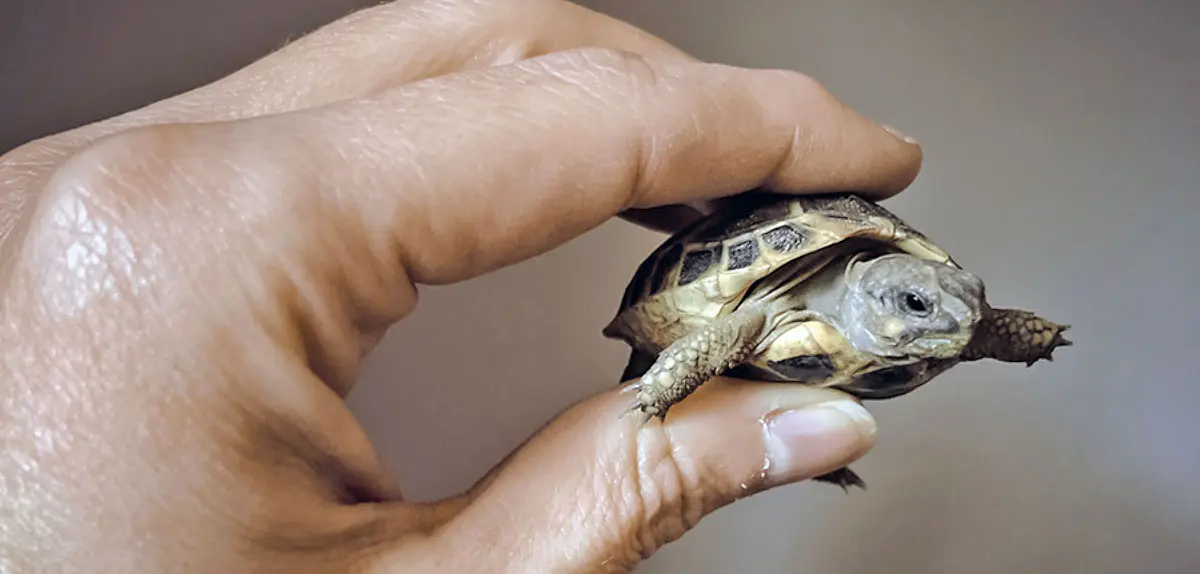
Scientific Name: Testudo Hermanni
Size: 4.5 - 8.5 inches
Weight: 4.4 - 5.5 lb.
Average Lifespan: 40 - 60 years
Habitat: Forest, woodlands, scrub, meadow
Diet: Herbivore
The Hermanns Tortoise is a friendly reptile that’s native to Europe and Western Asia. You can find these little creatures thriving in many environments across Bulgaria, Croatia, France, Spain, Turkey, Greece, and Italy. Though they are common in the wild, Hermanns hold near-threatened status - their numbers are decreasing due to habitat destruction.
You can easily recognize Hermanns tortoises by their distinctive colors. They have a black and yellow shell, dark skin with yellow patches, and the males have a thick, spurred tail. These small reptiles hibernate in the winter and are active during the day, except in high summer when they seek shade. Hermanns don't like too much moisture, are super adventurous, and enjoy digging and climbing.
Hermanns tortoises are super friendly and are popular pets. They are easy to keep with a relaxed temperament, making them an ideal beginner's tortoise.
Indian Star Tortoise
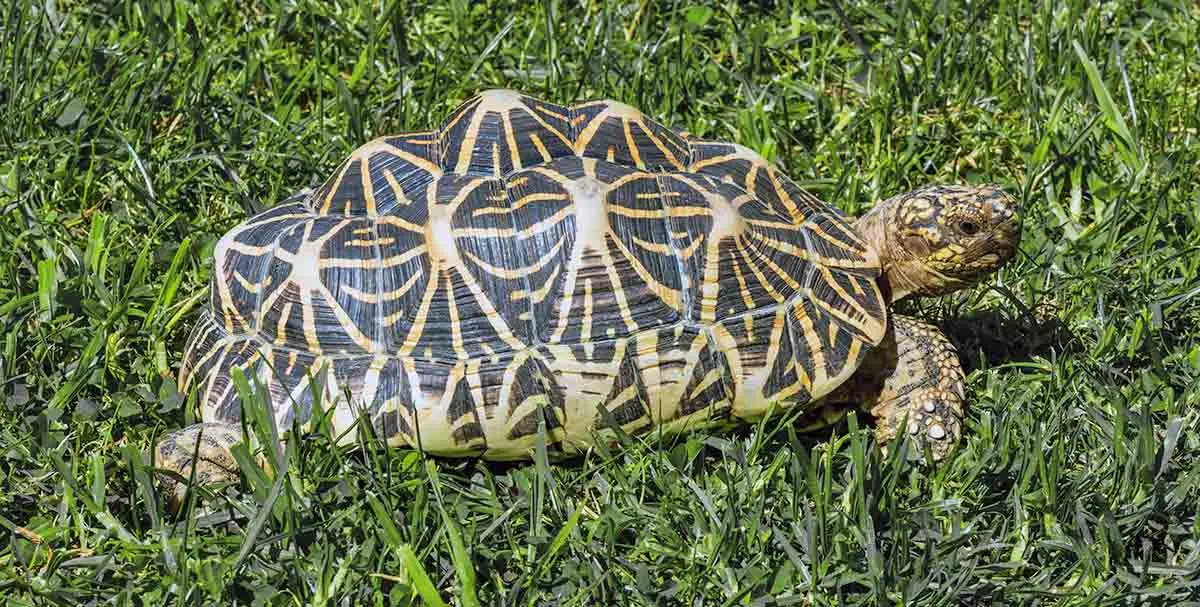
Scientific Name: Geochelone Elegans.
Size: 5 - 15 inches
Weight: 2-14 lb.
Average Lifespan: 30 - 50
Habitat: Semi-desert, dry forest, dry grasslands.
Diet: Herbivore
Indian Star tortoises are one of the most distinctive and fascinating tortoise species because of their humped shell and impressive geometric, star-like patterns. Their colors make them desired exotic pets, meaning they have been over-collected from the wild and are now a threatened species. They, along with so many others, are also facing the challenge of habitat destruction.
These decorative Asian reptiles are native to India, Pakistan and Sri Lanka. Their size and markings vary among the different regions. The ones from southern India are generally the smallest and have the most distinctive markings. They're originally from a tropical monsoon climate, and even though they aren’t turtles, these little guys love water and don’t hibernate.
These cute little tortoises are peaceful and friendly but have complex care needs, so I don’t recommend them for beginners.
Russian (Horsefields) Tortoise

Scientific Name: Testudo Horsfieldii
Size: 5 - 9.5 inches
Weight: up to 2.5 lb.
Average Lifespan: 50 - 80 years
Habitat: Desert, shrubland, temperate grassland.
Diet: Herbivore.
The Russian or Horsfield's tortoise is a tiny species native to Russia and Central Asia. It lives on arid and barren landscapes and can be found in habitats up to 5000 meters high. This hardy tortoise, however, is now classed as a vulnerable species.
Russian tortoises are short and stout with a flat-topped shell and rusty brown, black and yellow markings. They are incredible diggers and burrow up to 6.5ft (2m) to hibernate during the long, harsh winters. In the wild, Russians are mostly inactive throughout the year because they also spend lots of time avoiding the heat in peak summer.
Domestic Horsfield’s tortoises are active and incredibly sociable with people, making them popular pets. But, despite their friendly nature, I don't recommend keeping them with other species. Due to their hardy nature and practical size, Russian tortoises are an excellent choice for beginners.
